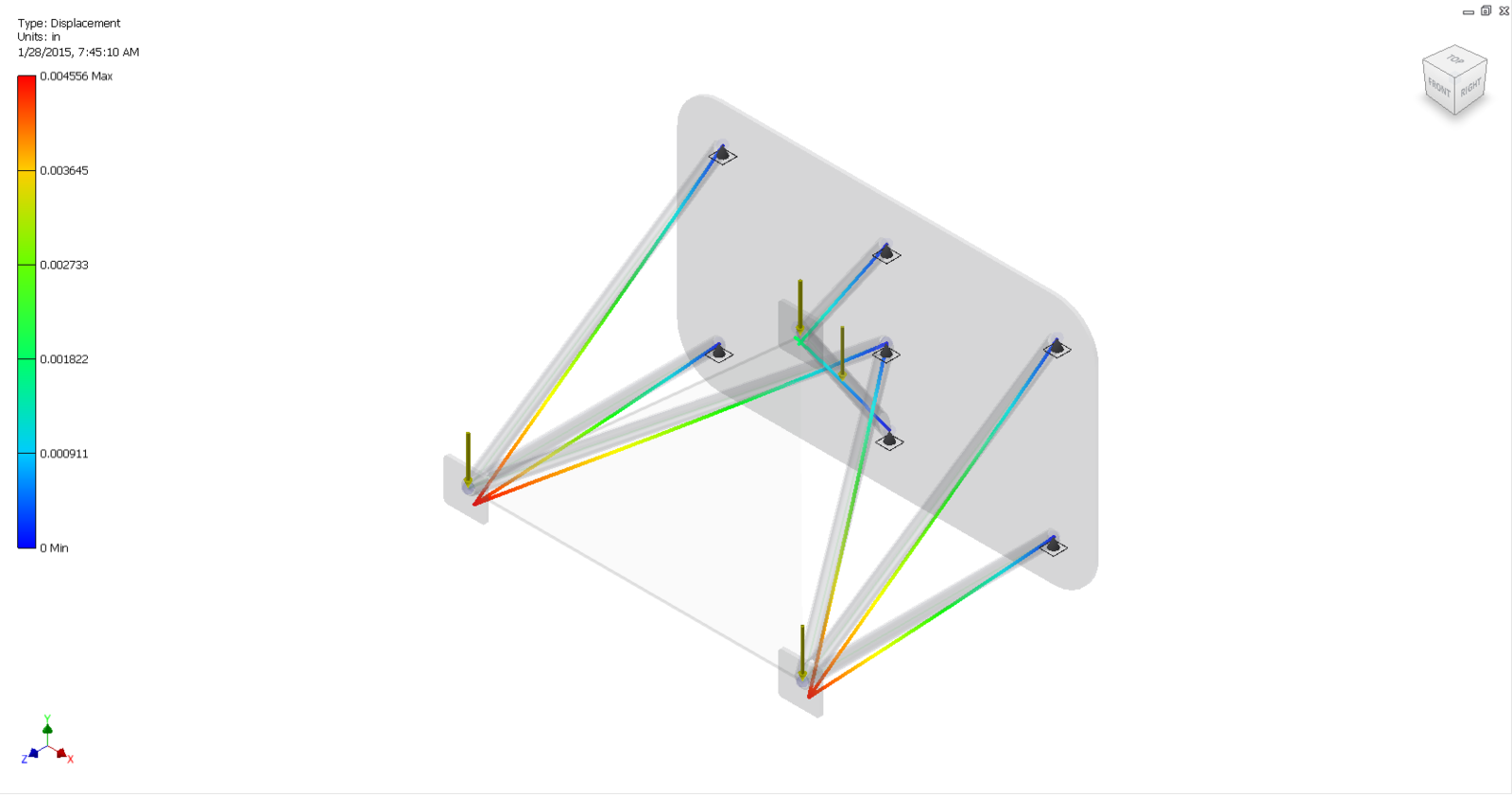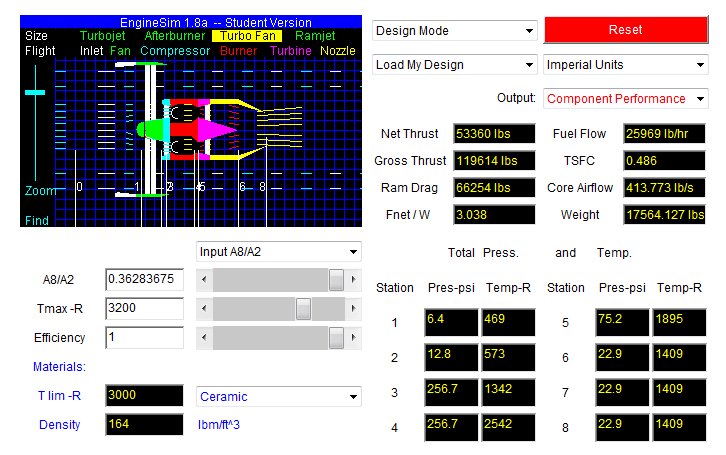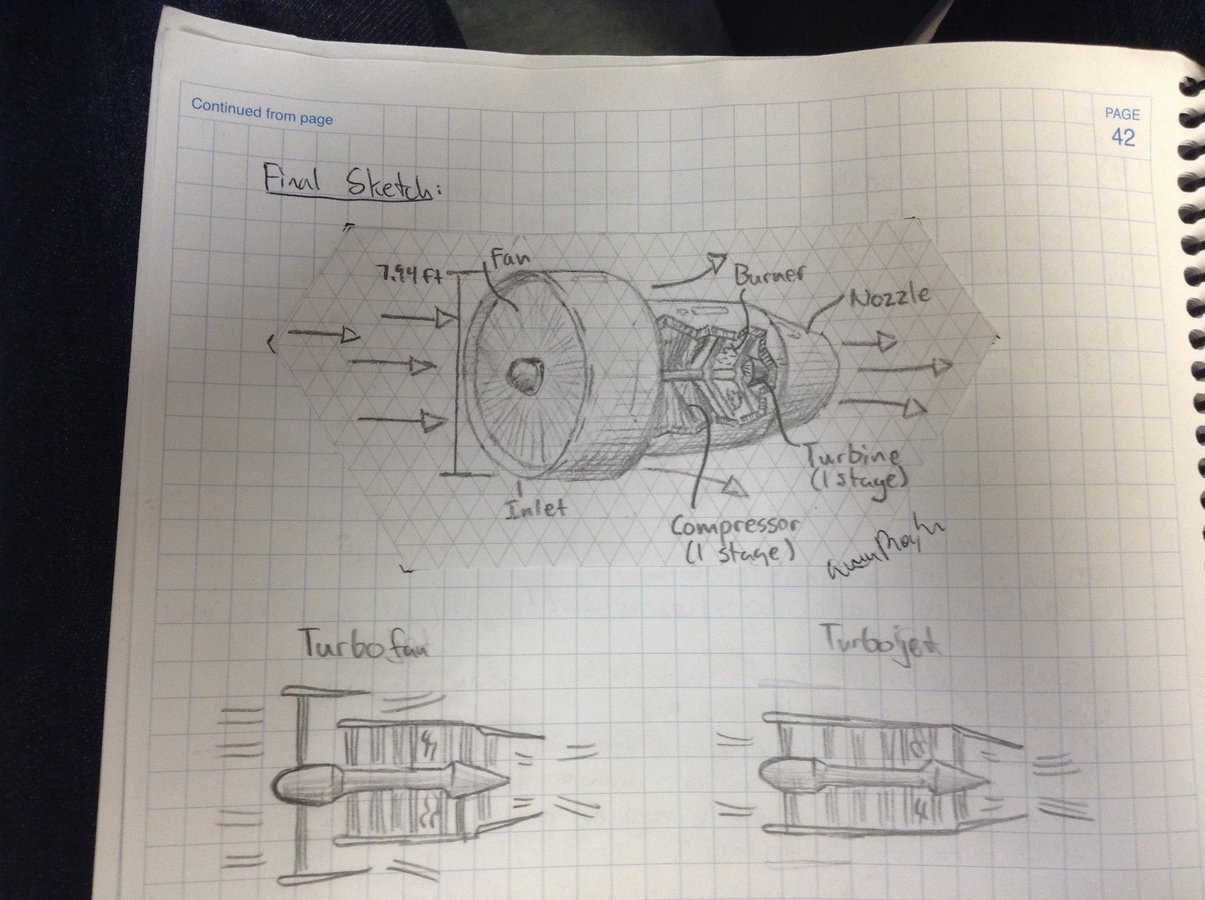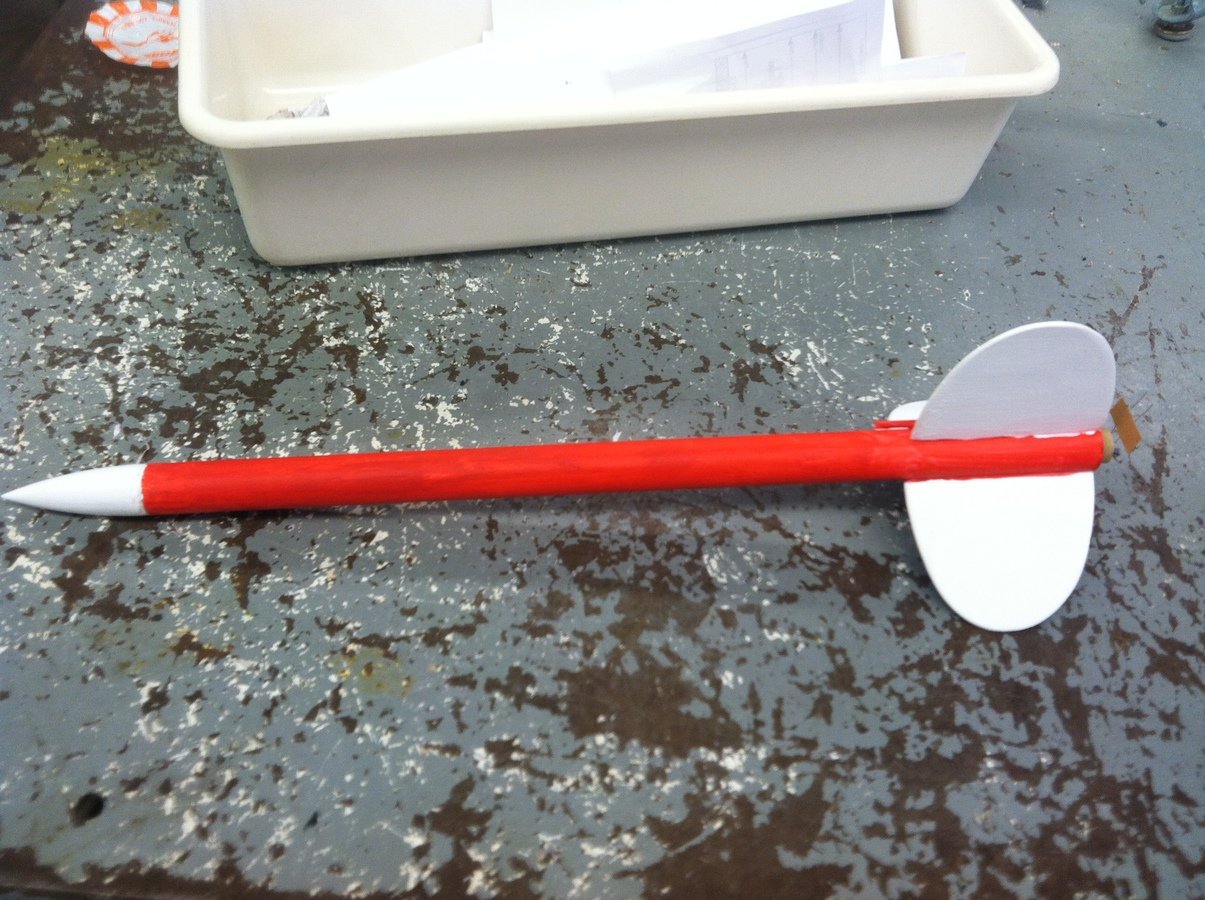Table of Contents Updated
Later in Portfolio
Frame Design
Evan Moylan
2nd Hour
New Format
Now that I need to use a different presentation program, I needed to upload my previous presentation as a PDF. For most purposes, this is sufficient, but for other applications such as a table of contents, this is a problem. Since I cannot edit the PDF, I will simply start a new table of contents here, and add portfolios for upcoming projects to the end of this presentation.
Table of Contents
P1.2.10 Glider Design Challenge 1
P1.2.11 Glider Design Challenge 2
P1.2.12 Glider Design and Build
P1.2.13 Glider Testing
P1.2.14 Glider Evaluation
P2.1.3 Frame Generator & Analysis
P2.1.4 Frame Design
P2.2.3 Turbine Engine Design
9/23-9/26/2014
9/26-10/1/2014
10/2-10/22/2014
10/24-10/28/2014
10/29-10/30/2014
1/6-1/17/2015
1/18-1/30/2015
2/20-3/6/2015
Design Brief
Constraints: The large plate represents the aircraft firewall as shown in the image below.
The plate will be grounded as the stable part of the frame.
The structure will support one Lycoming O-300 engine (250 lb) attached as indicated.
The structure will be analyzed twice: loaded with negative 3G and positive 6G.
Simulated by exaggerated engine weight- 250 lbs downward at each mounting point and 500 lbs upward at each mounting point.
Structural members will be in 1 1/2 in. ANSI pipe.
Frame members should be mitered as necessary.
At least 3 different materials must be analyzed.
Design Brief
Problem Statement: An aircraft company is designing an new single-engine, propeller driven plane. They have selected the Lycoming O-300 Engine and needs an engine mount to support their engine.
Design Statement: Your team has been asked to create and test multiple materials to mount to support the Lycoming O-300 engine. You will choose the materials based on your understanding of aerospace material properties.
Design Brief
Criteria: Should be less dense than Stainless Steel.
At least 3/10 materials should be nonmetals.
p1.2.4 Frame engine design
Material
Force
Displacement, Max (in)
Aluminum
Aluminum
Polyethylene
Polyethylene
Oak Wood
Oak Wood
3G Down
3G Down
3G Down
6G Up
6G Up
6G Up
Modulus of Elasticity (ksi)
0.2316
0.4593
0.004556
0.008881
0.03330
0.06626
194.485
194.485
99300.000
99300.000
1349.782
1349.782
Density (lb/ft^3
56.123
56.123
169.180
169.180
34.960
34.960
Tensile Strength (ksi)
0.798
5.298
44.993
44.993
5.298
0.798
.36
.36
.83
.83
1.27
Cost Effect ($/lb)
1.27
Aluminum was chosen because of its high relative strength and modulus of elasticity; low deformation, low density for a metal; and moderate cost effect.
P1.2.4 Frame engine design
6G Up


3G Down
Aluminum 6061
Material Selection
Aluminum has the highest strength, and highest modulus of elasticity, and lowest deformation, making it by far the strongest material to build the frame out of. It has moderate cost effect, and its strength is higher than woods by over 44 times, making up for its higher density. Aluminum makes the best compromise between strength, density, and cost, making it the optimal choice to build this engine frame with.
Engine Design
Evan Moylan
2nd Hour
Reflection
The solution I found was moderately effective. Aluminum has extremely desirable characteristics for building structural elements of aircraft, such as high strength, low cost, a high modulus of elasticity, and a low density for a metal. My solution met all of the design constraints and even met my criteria that it should be less dense than steel. I would, however, like to experiment with alternative frame designs that may be able to reduce stresses on the materials used, resulting in a stronger frame. I would also like to test a wider range of materials to find out if one of them has more desirable properties than Aluminum. Next project, I will try to do many things similar to how I did this project, but I will strive to turn in elements on time and achieve more level 4s.
Design Brief
Problem Statement: An aircraft company is designing a new turbine engine-driven plane that could be used in a new commercial or military plane. They need a highly efficient engine that minimizes fuel costs and maximizes thrust.
Design Statement: Your team has been asked to create and test multiple engine designs and recommend a design that meets the project constraints.
Design Brief
3. Optimize efficiency as measured by Thrust Specific Fuel Consumption (TSFC) by systematically manipulating the design variables:inlet (pressure recovery), fan (pressure ratio, efficiency, and bypass ratio), compressor (CPR, compressor efficiency), burner (fuel, maximum temperature, efficiency, pressure ratio), turbine (turbine efficiency) and nozzle (maximum temperature, efficiency, A8/A2) .
4. Optimize engine size for the selected commercial or military application.
Design Brief
Constraints:
1. Engine choices: simple turbojet, jet with afterburner, turbofan engine, ramjet
2. Flight conditions within the acceptable range for similar commercial or military planes: mach number, airspeed, altitude, pressure, temperature, and throttle and afterburner settings .
Design Brief
5. Optimize materials by selecting appropriate materials in each stage of the engine without exceeding material limits.
6. Optimize final selection primarily based on efficiency (TSFC) and scondarily on average weight and thrust to weight ratio.
EngineSim
Text

Design Brief
Criteria
1. Should be comparable to the Pratt & Whitney JT9D-3 Turbofan Engine in TSFC and Net Thrust.
2. Should have a thrust-to-weight ratio of at least 3.
Final SImulation
Text
Engine Explanation
Text

-
Intake- The engine takes in air to the compressor, but in the case of a turbofan, some air bypasses the compressor and is pushed directly out the back of the fan. This gives the turbofan its higher efficiency, and is the main difference between Turbojets and Turbofans.
Engine explanation
-
Compression- The air in the engine is compressed, creating a high-pressure area and making for better combustion.
-
Combustion- The fuel and oxygen mixture is ignited, and the high pressure gases just created move to the low pressure areas near the back of the engine.
- Exhaust- Hot gases are expelled out the back of the engine, creating thrust to propel the engine forward.
Reflection
The Engine I created did not meet the requirements of the design brief. The engine met all of the constraints, but not my self defined criteria. I hoped to create an engine comparable to the Pratt & Whitney JT9D-3 Turbofan Engine, and while I definitely succeeded in terms of the fuel consumption (0.45 for mine vs. 0.6 for the JT9D), I failed to reach the needed thrust-to-weight ratio or the required thrust (17,000 vs. 44,000). I learned that increasing fuel efficiency in my engine meant compromising by losing thrust most of the time, making it difficult to find the right balance of the two. If I redid the project, I would focus less on the TSFC once I reached the required fuel efficiency and focus my efforts on maximizing my thrust-to-weight ratio.
Reflection
I learned that the best way to increase my thrust-to-weight ratio is not to focus on increasing on thrust, but by decreasing weight. I learned that it is much simpler to find lightweight materials in my engine than try to create higher pressures and temperatures in my engine than to squeeze out all of the thrust that I can. Next project I hope to do a few things differently, such as doing more research so that I fully understand the design variables going in to the project.
Rocket Design
Evan Moylan
Aerospace Engineering
2nd Hour

Design Brief
Problem Statement: RocketMan Rockets, a model rocket company, wants to market a new rocket model design that achieves maximum alltitude using parts already available within the company to assure a low-cost, high-profit margin product.
Design Statement: Your team has been asked to create and test multiple rocket designs and recommend a design that meets the project constraints.
Design Brief
Constraints:
1. Altitude: maximize
2. Nose cone size choices:
o short: conical, 1/16" Hollow Plastic, length = 3.875 in, diameter: 1.0 in
o long: conical, 1/16" Hollow Plastic, length with adapter = 4.75 in, diameter: 1.0 in
3. Recovery System: 1 ft parachute
4. Recovery System Ballast: 0.17 oz.
5. Engine size: C6-5 for design to ensure stability for all engine sizes, B6-4 and A8-3 for final design
6. Payload: 0 oz.
Design Brief
7. Body:
o 1/32" cardboard
o length: between 7 and 18 inches inclusive
o diameter: 1 inch
8. Fin material: 1/8" balsa
9. All other RocketModeler settings should be the default settings.
Final Data Run
I had a problem displaying my final simulation data run. Every time I attempted to open the file, Google Sheets gave me an error I had never seen before: "The screen you are using is too small. Try using a larger browser window." I was using my laptop with google chrome in a full screen window. Hopefully I can fix this: if not, a printout of my final data run can be found in my engineering notebook.
Further Development
My rocket should be selected for further development for two reasons: build quality and thoughtful design. For starters, my rocket was built to excel in every aspect of its flight. I made sure I used the best available pieces of wood for my fins, and spent 2 hours shaping them to be exactly the same correct size and shape in order to achieve the maximum possible height. Because of this high quality construction, my rocket can withstand the trials of repeated test launches, and any unsatisfactory flights will be due to u successful design choices, not build defects. In addition, the design I used was extremely successful. It reached the top expected height in the class, 2048 feet, along with several other rockets, but the large fins on my rocket allowed it to be exceptionally stable with any engine weight, meaning this same design could be tested with progressively larger solid fuel engines.
Reflection
I learned many things through this rocket design project. While my rocket met all of the requirements of the design brief: used the materials it was supposed to and maximized altitude, I learned that I could make my fins significantly smaller, like many of my classmates, and still have a highly successful rocket while reducing materials cost. If I redid this project, I would not paint my rocket. I would leave the rocket without paint to reduce weight, hopefully resulting in a higher maximum altitude. Next project, I will try not to procrastinate my report, notebook, and portfolio until the day be for the project is due because I have spent a long time working on this project today and it will feel so good to finally be done.
Where is the ISS
Project 3.2.8
Design Brief
Problem Statement: I have been asked to determine the time that the ISS will pass over Kirkwood, MO within the next 3 weeks using STK software
Design Statement: I will create a simulation using the STK software to determine when the ISS will pass over Kirkwood, MO.
Constraints:
- The ISS must be in direct sunlight
- My house must be in the Umbra
- Must have an elevation angle greater than 10 degrees
Evaluate Solution
After constraining my simulation in STK 10, I ended up with 56 total accesses as opposed to my original 147 accesses before constraining the program. By progressively adding a sequence of constraints on both the ISS and my own house in the program, I was able to drastically reduce the number of accesses. First I constrained the ISS to only be in sunlight so that the sun would reflect off of it, allowing me to hypothetically see it, reducing the number of accesses to 130, not a huge difference. I then constrained my house to make sure it would be nighttime when I hypothetically attempted to observe the ISS so that I could potentially see the ISS in the dark backdrop of the night sky. This further reduced the number of accesses to 87; by far the most pronounced reduction, most likely because it requires an odd combination where the ISS is hit by the sun, but my house is not. The last constraint I introduced was the minimum elevation angle, which reduced the number of accesses to 68 at 6 degrees, and then 56 at 10 degrees. The combination of all these constraints lead to my final number of accesses. As I added more constraints, the number of access times decreased, and STK vastly simplified my workload because while orbital mechanics equations are relatively straightforward, it would take advanced mathematical knowledge to do this with a pencil and paper. It would also take much, much more time to do so. STK allowed me to model when the ISS would pass over my house in a matter of minutes. Thank you, STK.
Present Solution
21 May 2015 08:50:09
AGI Educational Alliance Partner
Place-My_House-To-Satellite-Iss_25544: Access Summary Report
My_House-To-Iss_25544
---------------------
Access Start Time (LCLG) Stop Time (LCLG) Duration (sec)
------ ------------------------ ------------------------ --------------
1 19 May 2015 03:41:05.917 19 May 2015 03:44:21.593 195.677
2 19 May 2015 05:17:26.097 19 May 2015 05:19:26.796 120.698
3 20 May 2015 02:49:48.629 20 May 2015 02:51:23.199 94.570
4 20 May 2015 04:23:06.946 20 May 2015 04:26:55.490 228.545
5 21 May 2015 03:31:01.395 21 May 2015 03:34:10.732 189.337
6 22 May 2015 02:39:35.031 22 May 2015 02:41:17.282 102.251
7 22 May 2015 04:14:52.276 22 May 2015 04:16:09.290 77.014
8 23 May 2015 01:48:04.428 23 May 2015 01:48:15.044 10.616
9 23 May 2015 03:20:38.235 23 May 2015 03:23:40.657 182.422
Present Solution
10 24 May 2015 02:29:02.966 24 May 2015 02:30:52.079 109.113
11 24 May 2015 05:42:10.517 24 May 2015 05:44:59.819 169.301
12 25 May 2015 01:37:22.978 25 May 2015 01:37:54.611 31.633
13 26 May 2015 02:18:10.363 26 May 2015 02:20:07.347 116.984
14 26 May 2015 05:31:24.552 26 May 2015 05:36:05.132 280.580
15 27 May 2015 01:26:17.802 27 May 2015 01:27:15.642 57.841
16 27 May 2015 04:38:31.455 27 May 2015 04:41:44.998 193.543
17 28 May 2015 03:46:03.311 28 May 2015 03:46:48.186 44.875
18 28 May 2015 05:20:42.374 28 May 2015 05:26:35.953 353.579
19 29 May 2015 01:14:27.096 29 May 2015 01:16:15.528 108.432
20 29 May 2015 04:27:36.480 29 May 2015 04:32:32.780 296.301
21 30 May 2015 00:21:26.016 30 May 2015 00:23:21.369 115.353
22 30 May 2015 03:34:35.823 30 May 2015 03:38:10.714 214.891
23 30 May 2015 05:10:02.755 30 May 2015 05:16:32.078 389.323
24 30 May 2015 21:48:01.374 30 May 2015 21:54:10.205 368.831
25 30 May 2015 23:24:55.460 30 May 2015 23:30:15.807 320.347
26 31 May 2015 02:41:49.370 31 May 2015 02:43:22.223 92.853
27 31 May 2015 04:16:44.271 31 May 2015 04:22:46.789 362.518
28 31 May 2015 20:55:18.726 31 May 2015 21:00:12.126 293.399
29 31 May 2015 22:30:54.273 31 May 2015 22:37:01.703 367.429
Present Solution
30 1 Jun 2015 00:10:04.564 1 Jun 2015 00:12:04.547 119.983
31 1 Jun 2015 03:23:31.271 1 Jun 2015 03:28:41.486 310.215
32 1 Jun 2015 04:59:30.238 1 Jun 2015 05:05:48.853 378.616
33 1 Jun 2015 21:37:09.733 1 Jun 2015 21:43:38.028 388.295
34 1 Jun 2015 23:15:19.269 1 Jun 2015 23:19:09.190 229.921
35 2 Jun 2015 02:30:23.313 2 Jun 2015 02:34:17.184 233.872
36 2 Jun 2015 04:05:54.988 2 Jun 2015 04:12:25.734 390.746
37 2 Jun 2015 20:43:45.151 2 Jun 2015 20:50:01.473 376.322
38 2 Jun 2015 22:20:53.232 2 Jun 2015 22:25:59.645 306.413
39 3 Jun 2015 01:37:25.611 3 Jun 2015 01:39:29.960 124.350
40 3 Jun 2015 03:12:28.932 3 Jun 2015 03:18:38.809 369.877
41 3 Jun 2015 04:49:18.848 3 Jun 2015 04:54:12.977 294.129
42 3 Jun 2015 21:26:42.398 3 Jun 2015 21:32:41.320 358.922
43 3 Jun 2015 23:06:09.591 3 Jun 2015 23:07:32.736 83.146
44 4 Jun 2015 02:19:08.818 4 Jun 2015 02:24:24.843 316.025
45 4 Jun 2015 03:55:14.100 4 Jun 2015 03:55:57.947 43.847
46 4 Jun 2015 04:00:37.487 4 Jun 2015 04:01:24.217 46.729
47 4 Jun 2015 20:32:47.889 4 Jun 2015 20:39:13.738 385.849
48 4 Jun 2015 22:11:09.364 4 Jun 2015 22:14:39.022 209.658
49 5 Jun 2015 01:25:53.708 5 Jun 2015 01:28:18.742 145.034
Present Solution
50 5 Jun 2015 21:16:33.560 5 Jun 2015 21:21:25.616 292.056
51 6 Jun 2015 00:32:46.810 6 Jun 2015 00:35:16.514 149.704
52 6 Jun 2015 20:22:13.228 6 Jun 2015 20:28:02.987 349.759
53 6 Jun 2015 22:02:11.822 6 Jun 2015 22:02:28.000 16.178
54 7 Jun 2015 01:14:29.017 7 Jun 2015 01:15:18.967 49.950
55 7 Jun 2015 21:06:41.955 7 Jun 2015 21:09:50.750 188.795
56 8 Jun 2015 00:21:06.846 8 Jun 2015 00:22:59.138 112.292
Global Statistics
-----------------
Min Duration 8 23 May 2015 01:48:04.428 23 May 2015 01:48:15.044 10.616
Max Duration 36 2 Jun 2015 04:05:54.988 2 Jun 2015 04:12:25.734 390.746
Mean Duration 209.981
Total Duration
Evan Moylan Portfolio
By Evan Moylan
Evan Moylan Portfolio
- 422



